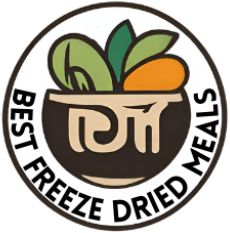Table of Contents
Introduction
Food preservation is a crucial aspect of modern life, allowing us to enjoy our favorite meals even when they are out of season or in emergency situations. Two popular methods for preserving food are freeze-drying and dehydration. In this article, we will delve into the world of food preservation and compare these two methods to help you make an informed decision.
Understanding Freeze-Drying
Pros of Freeze-Drying Freeze-drying is a method that involves freezing food and then removing its moisture content through sublimation. This process offers several advantages:
Nutrient Retention: Freeze-drying retains more nutrients compared to other preservation methods, making it an excellent choice for health-conscious individuals.
Long Shelf Life: Freeze-dried foods have an extended shelf life, often lasting for years, making them ideal for emergency preparedness.
Lightweight: These foods are lightweight and easy to carry, making them suitable for camping, hiking, and backpacking.
Cons of Freeze-Drying While freeze-drying has numerous benefits, it also has its drawbacks:
Cost: The equipment required for freeze-drying can be expensive, which can make the process less accessible for home use.
Time-Consuming: Freeze-drying is a time-consuming process, requiring several hours to complete.
Exploring Dehydration
Pros of Dehydration Dehydration is a method that removes moisture from food using heat and air circulation. Here are some advantages of this preservation technique:
Affordability: Dehydrators are more affordable than freeze-drying equipment, making it a cost-effective option for home use.
Easy to Use: Dehydrators are user-friendly and do not require extensive knowledge or experience.
Space-Efficient: Dehydrated foods take up less space, making them suitable for small kitchens or storage spaces.
Cons of Dehydration Dehydration also has its limitations:
Nutrient Loss: The process may result in some nutrient loss, especially compared to freeze-drying.
Shorter Shelf Life: Dehydrated foods have a shorter shelf life than freeze-dried ones, typically lasting months to a few years.
Choosing Between Freeze-Dried and Dehydrated Meals
When deciding between freeze-dried and dehydrated foods, consider the following factors:
Intended Use: Are you preserving food for emergency situations, camping, or everyday use?
Budget: What is your budget for preservation equipment and supplies?
Nutritional Value: Do you prioritize retaining the maximum nutrients in your preserved foods?
Storage Space: How much storage space do you have available?
Conclusion
In the battle of freeze-dried vs. dehydrated food preservation, there is no one-size-fits-all answer. Your choice depends on your specific needs and preferences. Freeze-drying offers longer shelf life and better nutrient retention but comes at a higher cost. Dehydration is more budget-friendly and space-efficient but may result in some nutrient loss.
Consider your intended use, budget, and space constraints when making your decision. Ultimately, both methods have their merits, and the choice between them should align with your unique circumstances and priorities. Happy food preservation!
References
- “Freeze-Drying vs. Dehydration: What’s the Difference?” The Spruce Eats.
- “Food Preservation Methods: Drying and Dehydration.” National Center for Home Food Preservation.
- “Freeze-Drying and Dehydration of Foods.” Food and Nutrition Research Institute.
